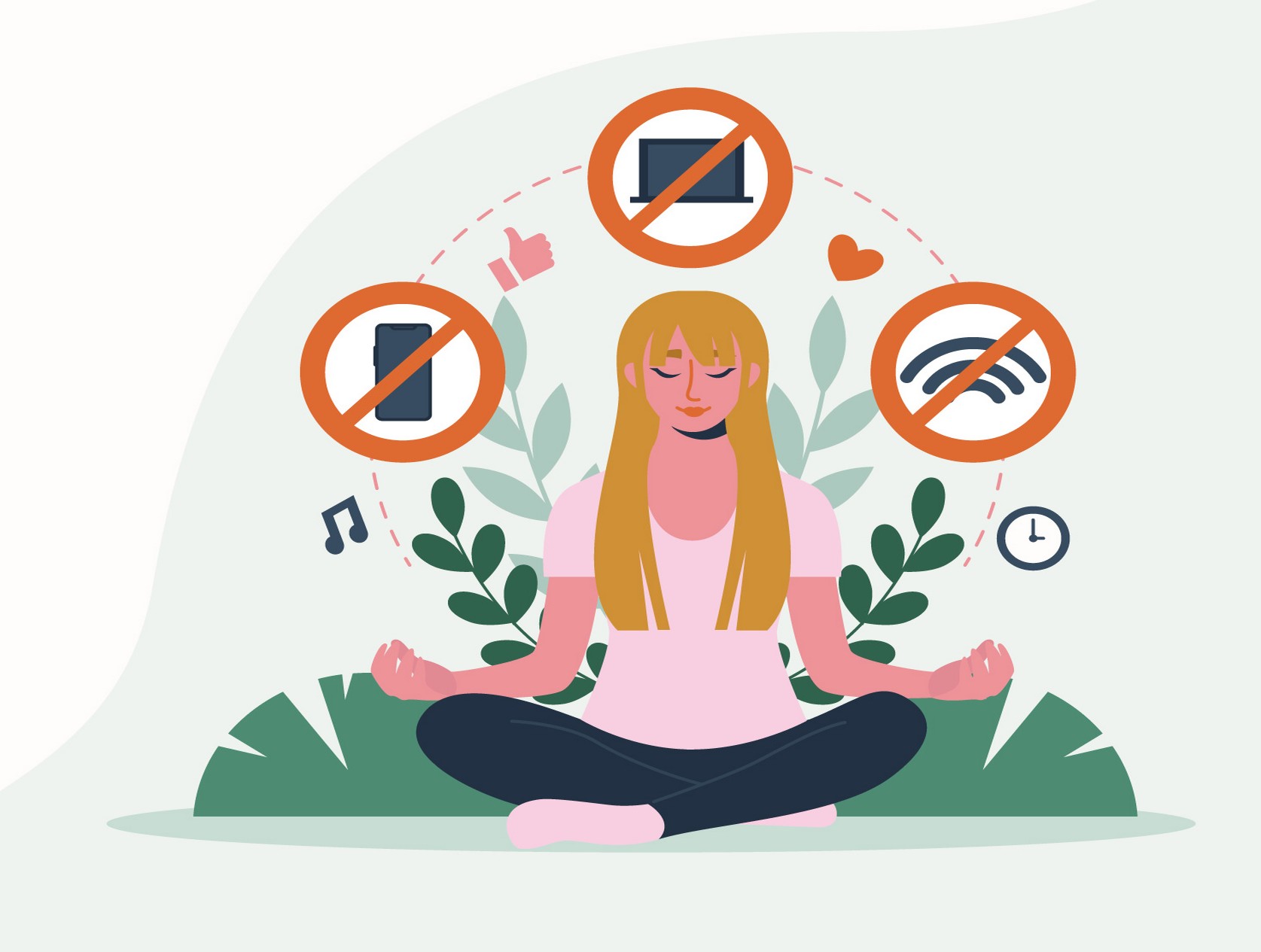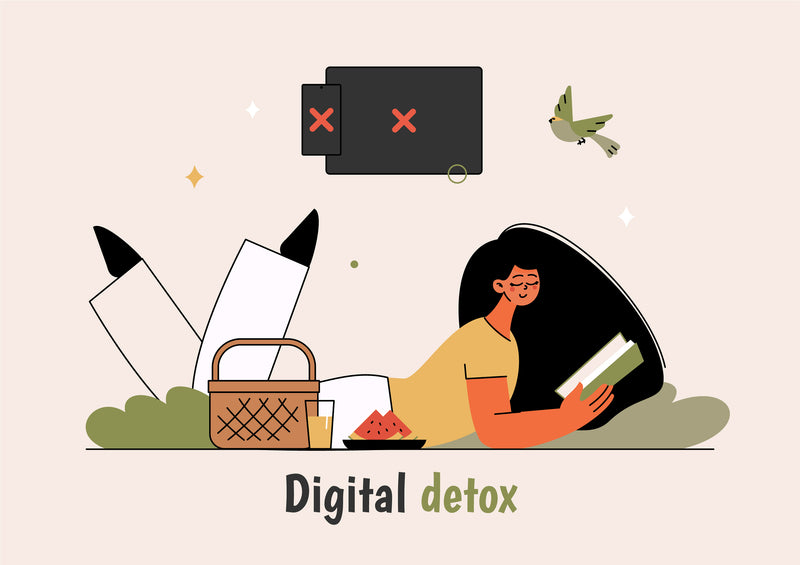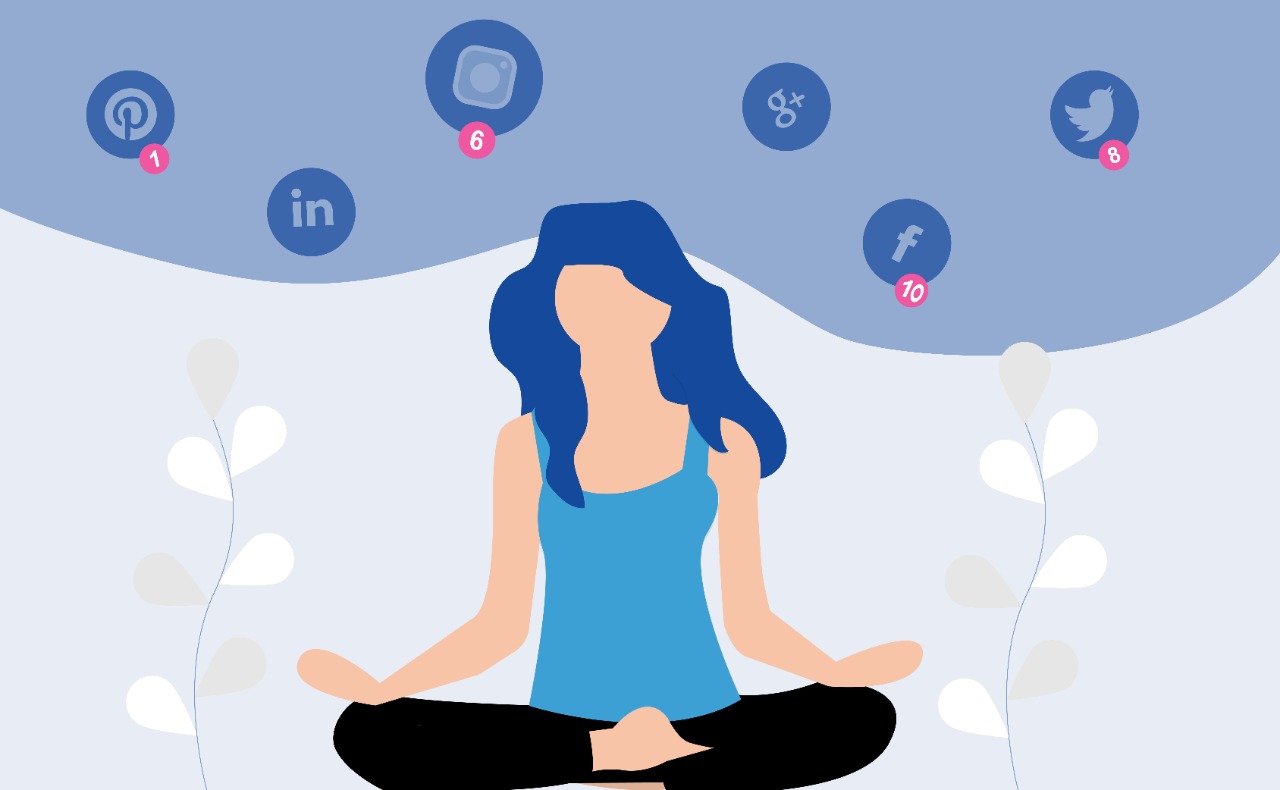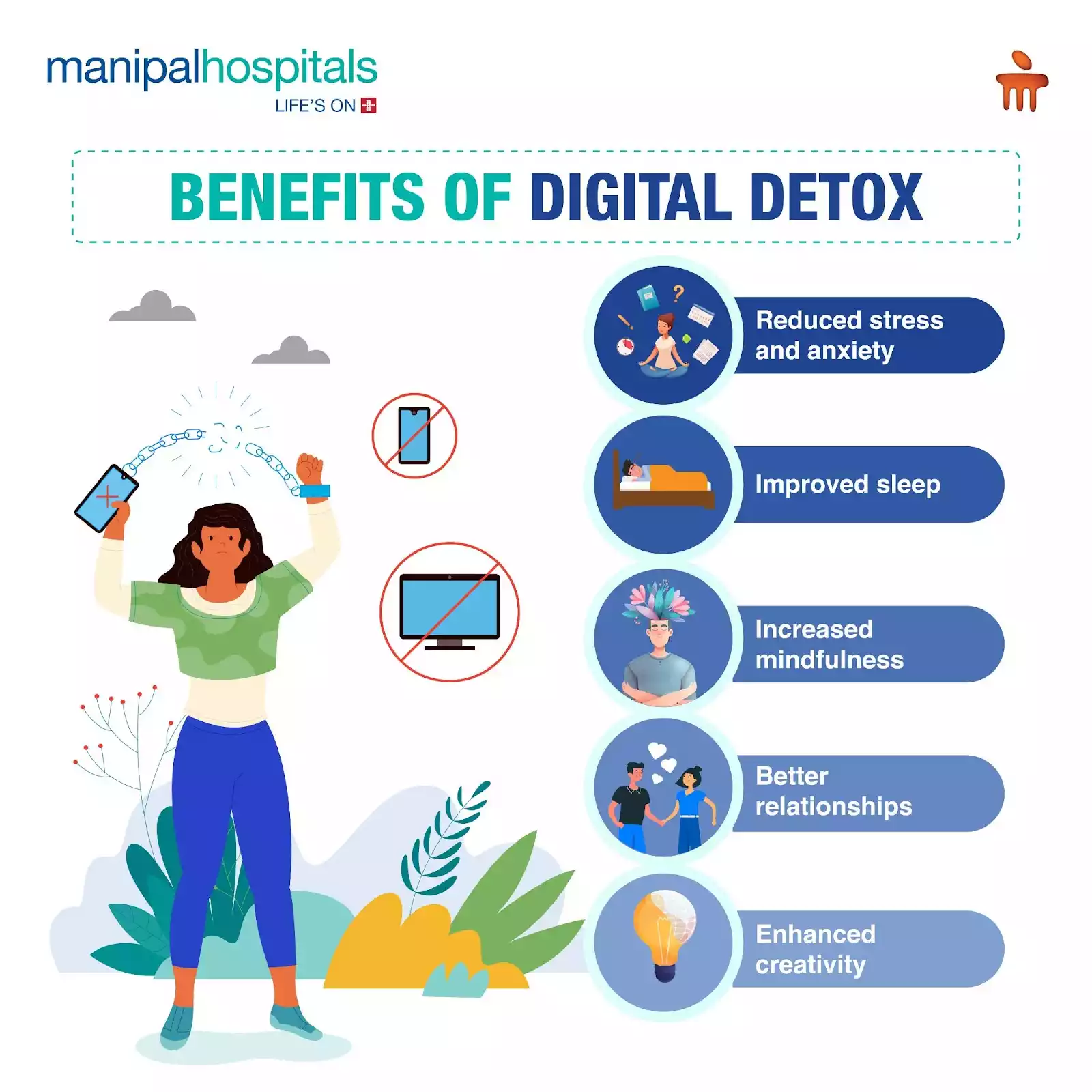Mindfulness and Digital Detox: Finding Balance in a Digital World
In our fast-paced, hyper-connected world, technology has become an essential part of our daily lives. Smartphones, social media, emails, and various apps keep us connected, informed, and entertained. However, this constant digital engagement can take a toll on our mental health, productivity, and overall well-being. As a result, mindfulness and digital detox have emerged as powerful practices to restore balance, focus, and tranquility.
In this article, we will explore how mindfulness can help you unplug from the digital world, how a digital detox can benefit your mental health, and practical strategies to incorporate mindfulness into your daily routine.

What is Mindfulness?
Mindfulness is the practice of being fully present and aware in the moment, without judgment. It involves paying attention to your thoughts, feelings, bodily sensations, and the environment around you, without getting lost in distractions or reactions. Mindfulness has its roots in meditation practices but has gained popularity in the Western world as a technique for reducing stress, improving focus, and promoting emotional well-being.
The Benefits of Mindfulness
- Stress Reduction: Mindfulness can help reduce stress by encouraging a calm and focused mindset. It teaches individuals how to manage stress responses, preventing them from spiraling into anxiety.
- Improved Focus: By practicing mindfulness, people can improve their ability to concentrate on tasks and make decisions with a clear mind.
- Enhanced Emotional Regulation: Mindfulness helps individuals become more aware of their emotional states and reactions, allowing for healthier emotional management.
- Better Physical Health: Mindfulness has been linked to improved sleep, reduced blood pressure, and a stronger immune system.
By practicing mindfulness, individuals can develop a sense of clarity and peace that makes it easier to manage digital distractions and create healthier relationships with technology.
What is a Digital Detox?
A digital detox refers to a period of intentional disengagement from digital devices and technology. During a digital detox, individuals reduce their use of smartphones, social media, computers, and other connected devices to focus on offline activities. The goal of a digital detox is not to eliminate technology altogether but to create a healthy balance between the digital world and real life.
The Need for a Digital Detox
We live in an age where constant connectivity has become the norm. The average person spends hours each day on their devices, checking emails, scrolling through social media, or watching videos. This hyper-connectivity can lead to various issues such as:
- Digital addiction: The constant need to check notifications can create addictive behaviors, where individuals feel compelled to stay online even when they don’t want to.
- Mental fatigue: Information overload from constant digital consumption can lead to burnout, affecting productivity and mental clarity.
- Decreased face-to-face interactions: With technology becoming the primary mode of communication, real-life connections and personal relationships often take a backseat.
By engaging in a digital detox, individuals can disconnect from the constant barrage of digital stimuli and reconnect with themselves and the world around them.

How Mindfulness Enhances the Digital Detox Process
While a digital detox focuses on unplugging from technology, mindfulness plays a crucial role in making the process more effective and meaningful. Here’s how mindfulness can enhance your digital detox journey:
1. Being Present in the Moment
Mindfulness encourages us to focus on the present moment, rather than being distracted by the constant ping of notifications or the urge to check our phones. When you practice mindfulness, you become more attuned to your surroundings, allowing you to fully engage in offline activities like spending time with family, walking in nature, or enjoying a meal.
2. Building Awareness of Digital Habits
Mindfulness involves becoming aware of your thoughts and behaviors. During a digital detox, mindfulness helps you become conscious of how often you reach for your phone or feel the need to check social media. By identifying these patterns, you can break the cycle of unconscious digital consumption and take control of your technology use.
3. Reducing Impulse and Reactivity
One of the key principles of mindfulness is non-reactivity—responding to thoughts and emotions with awareness, rather than reacting impulsively. When it comes to digital devices, mindfulness helps reduce the urge to immediately respond to every notification, giving you more space to think and make conscious decisions about how you use technology.
4. Managing Stress and Anxiety
A digital detox can be challenging, especially for those who are used to being constantly connected. Mindfulness provides tools to manage the discomfort that can arise when disconnecting from digital devices. By practicing deep breathing, meditation, and mindful reflection, you can manage any feelings of anxiety or FOMO (fear of missing out) that might arise during your detox period.
Practical Tips for Mindfulness During a Digital Detox
Now that we understand the importance of mindfulness and digital detox, let’s explore some practical strategies to incorporate mindfulness into your detox routine:
1. Start with Short Breaks
If you’re new to digital detoxing, it’s best to start small. Begin with a 30-minute digital detox where you completely unplug from all devices. During this time, practice mindfulness by focusing on your breathing, engaging in mindful activities like reading, or simply sitting in silence and observing your surroundings.
2. Create Tech-Free Zones
Establish areas in your home or office where digital devices are not allowed. This could be the dining room, bedroom, or a designated relaxation space. Use this time to engage in offline activities like cooking, spending time with loved ones, or practicing yoga and meditation.
3. Practice Mindful Breathing
When you feel the urge to check your phone or get lost in a digital distraction, take a moment to pause and practice mindful breathing. Inhale deeply for four counts, hold for four, and exhale for four. This simple technique can help you calm your mind, regain focus, and reduce impulsivity.
4. Engage in Offline Activities
During your digital detox, engage in activities that require your full attention and presence. This could include journaling, hiking, cooking, or reading a book. These activities allow you to practice mindfulness while engaging in meaningful offline experiences.
5. Set Boundaries for Digital Use
Mindfulness isn’t just about what you do during a detox—it’s also about how you manage your digital use after the detox. Set clear boundaries for how much time you’ll spend on your devices each day, and stick to them. Use tools like screen time trackers to monitor your usage and ensure you’re balancing digital engagement with offline experiences.

The Benefits of Combining Mindfulness with a Digital Detox
When mindfulness is incorporated into a digital detox, the benefits are multiplied. Here’s why combining the two practices is so effective:
1. Improved Mental Clarity
Mindfulness enhances your ability to be present and clear-headed. A digital detox, combined with mindfulness, helps clear mental clutter, improving your ability to focus on tasks and think more deeply.
2. Reduced Stress and Anxiety
Mindfulness provides tools to manage stress and stay calm in the face of digital detox challenges. By practicing mindful awareness, you can reduce feelings of anxiety and discomfort that often arise when stepping away from digital devices.
3. Reconnection with Real Life
Mindfulness allows you to fully immerse yourself in real-world experiences, whether it’s enjoying nature, spending quality time with loved ones, or engaging in a hobby. By disconnecting from the digital world, you create space for deeper connections with yourself and others.
4. Long-Term Digital Balance
By making mindfulness a regular practice during your digital detox, you can develop healthier habits around technology use. This leads to a long-term balance between digital engagement and offline activities, fostering a more intentional and fulfilling lifestyle.
FAQs About Mindfulness and Digital Detox
Q1: How long should a digital detox last?
A1: The duration of a digital detox depends on your goals and personal preferences. Start with a short detox period of a few hours or a day, and gradually extend it. A weekend or week-long detox is also highly effective for deeper relaxation and mental clarity.
Q2: Can mindfulness really help reduce digital addiction?
A2: Yes, mindfulness helps increase awareness of digital habits and reduces impulsive behaviors. By practicing mindfulness, you can break the cycle of digital addiction and regain control over your device usage.
Q3: What if I experience anxiety or discomfort during a digital detox?
A3: It’s common to feel discomfort when disconnecting from technology, especially if you’re used to being constantly online. Practice mindful breathing, meditation, and gentle self-compassion to ease anxiety and stay grounded during your detox.
Q4: How can I incorporate mindfulness into my daily routine?
A4: Start by setting aside a few minutes each day for mindfulness practice. Focus on your breath, engage in mindful walking, or take breaks throughout the day to check in with your thoughts and emotions.
Conclusion
Mindfulness and digital detox are powerful tools that help us navigate the complexities of modern life. By combining the two, we can cultivate a balanced, intentional relationship with technology, reduce stress, and enhance our overall well-being. Whether it’s through short breaks, mindful breathing,
or engaging in offline activities, incorporating mindfulness into your digital detox can lead to lasting changes in your mental health and lifestyle.
In a world that’s increasingly dominated by screens and constant notifications, taking time to unplug and reconnect with ourselves is more important than ever. Start your digital detox today, and embrace mindfulness to rediscover peace, clarity, and joy in your everyday life.


